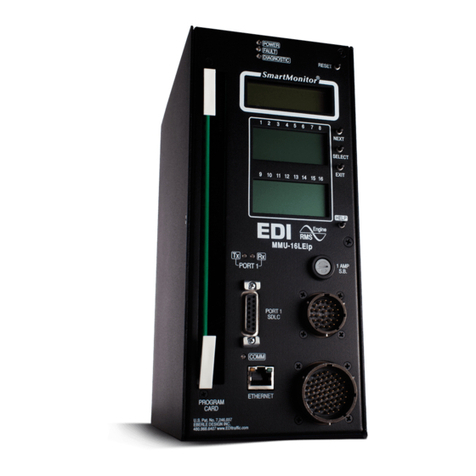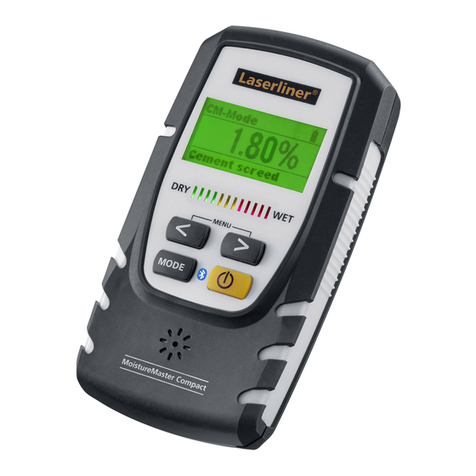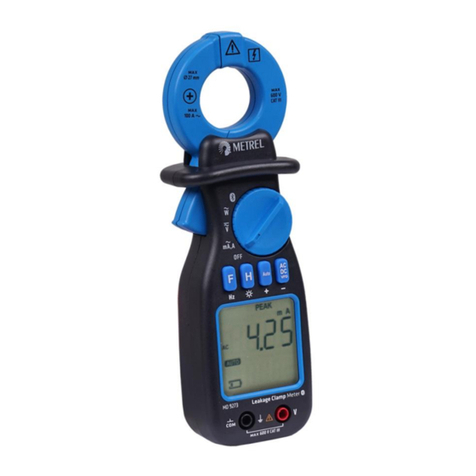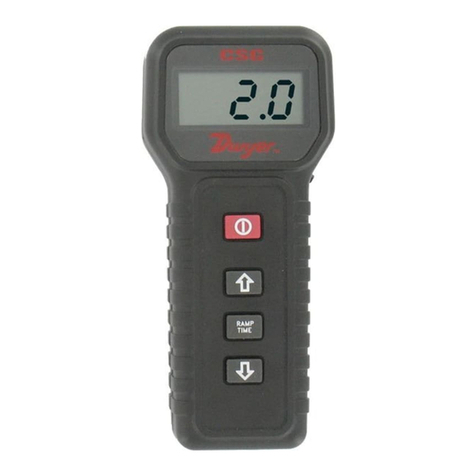ERT AM3 User manual

Instructions for Use
Peak Flow Meter AM3
Option G+
781195
Version 02.01
for Firmware ≥9.40


Page 3/40Version 02.01 • Date 19JAN2017
Table of Contents
Indications for Use ....................................................................................................5
Notes on Safety in Instructions for Use......................................................................6
Declaration of Conformity.........................................................................................6
1. The Peak Flow Meter AM3 ......................................................................7
1.1 Display symbols ...........................................................................................9
2. General Handling....................................................................................10
2.1 Turning the Device ON...............................................................................10
2.2 Turning the Device OFF..............................................................................10
3. Performing Assessments and Transferring Data ..................................10
4. Lung Function Measurements with the AM3 .......................................14
4.1 Preparing for the Measurement .................................................................14
4.2 How to Perform Measurements with the AM3...........................................15
4.3 Validity of PEF Measurements ....................................................................17
4.4 Performing Scheduled Sessions ..................................................................17
4.5 Interrupting a Scheduled Session ...............................................................18
4.6 Performing Unscheduled/Optional Measurements......................................18
5. Power Management ...............................................................................19
6. Memory Capacity....................................................................................20
7. Error Checklist .........................................................................................21
8. Cleaning...................................................................................................22
8.1 Cleaning of Sensor ....................................................................................22
8.2 Checking the Sensor..................................................................................22
8.3 Disposal of Sensor and Mouthpiece ..........................................................23
8.4 Cleaning of Housing ..................................................................................23
9. Safety Precautions AM3 .........................................................................24
9.1 Safety Precautions for Lithium Ion Rechargeable Batteries .........................30
9.2 Safety Precautions for Wireless Communication.........................................31
10. Technical Data .........................................................................................36
Index .................................................................................................................38

Page 4/40 Version 02.01 • Date 19JAN2017
This document contains copyright information. All rights are reserved. It is not
allowed to copy, duplicate or translate this manual in any other language without
having the written approval of ERT before. ERT reserves the right to alter the
information included in this document without notice. Names of persons men-
tioned in the context of this manual are ctitious - any resemblance to living or
deceased persons is purely incidental and not intended.
Subject to technical modications.
This Instructions for Use is for the patient only. For all medical personal, please
use the more detailed MasterScope IFU (article no. 782126).
If you have any questions or problems with your device please contact
your responsible physician.

Page 5/40Version 02.01 • Date 19JAN2017
Indications for Use
The Asthma Monitor AM3/AM3 BT/AM3 GSM/G+ is an electronic measurement
device to monitor the lung function (determination of the respiratory ows and vol-
ume) with high reproducibility wherever and whenever there is a need of. The AM3
measures the ow during expiration serving for the calculation of further parameters
as FEV1.
The AM3 is used to monitor the respiratory status of adult human beings in the areas
of asthma, chronic obstructive pulmonary disorder and in areas like occupational
medicine, clinical trials and disease management.
The patient is informed of the results by numeric values for the selected parameters
(e.g. PEF, FEV1). Furthermore, a visual control unit, displayed in the form of trafc
lights, allows an immediate indication of the measurement based on criteria dened
by the patient’s physician.
The device saves the results of a measurement (always with date and time) automati-
cally in an internal database. In addition, questionnaire functionality can be called up
by the use of a software package (AMOS) to record e.g. the “Quality of Life” status.
When enabled, the AM3 can be programmed with a couple of questions, where the
patient can then select from a couple of different answers. This information is also
stored in the internal database and can be transmitted for evaluation to a standard
PC using the software package AMOS.
The AM3 is designed to replace an ordinary peak ow meter, diary and pencil by a
single system. Easy handling, sturdy and handy design allow the Asthma Monitor
AM3 to be used in healthcare, clinical and home use environments/settings.
US FEDERAL LAW RESTRICTS THIS DEVICE TO SALE BY OR ON THE
ORDER OF A PHYSICIAN. (Rx only)
The application of this system is restricted to trained users who can guarantee for the
correct usage of the device.
The AM3 is powered with a Lithium-ion battery. No energy is transferred to the
users.

Page 6/40 Version 02.01 • Date 19JAN2017
Following the ANSI recommendations (American National Standards Institute) for
safety notes, specic passages of the instruction manual are clearly marked as safety
notes.
Degree of
Danger
Injury to
Persons
Damage
to Property Use in case of:
X
DANGER indicates an imminently
hazardous situation which, if not avoided,
will result in death or serious injury. This
signal word is to be limited to the most
extreme situations.
X
WARNING indicates a potentially
hazardous situation which, if not avoided,
could result in death or serious injury.
X (X)
CAUTION indicates a potentially
hazardous situation which, if not avoided,
may result in minor or moderate injury. It
may also be used to alert against unsafe
practices.
Notes on Safety in Instructions for Use
Declaration of Conformity
Additional icons shown in the instruction manual:
The original document of the Declaration of Conformity can be found in
the Accompanying Documents.
Important and useful information.
Information does not warn of dangerous
or harmful situations.
Hints for use.

Page 7/40Version 02.01 • Date 19JAN2017
1. The Peak Flow Meter AM3
The AM3 is a medical device that combines a spirometer with a symptom diary. This
device displays questions concerning asthma symptoms to be answered twice a day
and measures and evaluates the Peak Flow (PEF = Peak Expiratory Flow [L/min] and/or
FEV1 (FEV = Forced Expiratory Volume) as well as other expiratory parameters.
The device keeps a diary of measurements by automatically recording in its memory
all answers and measurements with date and time.
The AM3 Equipment comprises of:
·AM3
·Power supply
·Bag
Before using the AM3 for the rst time, the batteries must be charged for
30 minutes (see chapter "Power Management").
Conrmation
Scroll up
Scroll
down
Off/Cancel
Front view: Bottom view:
Flow Sensor
(without cap)
Flow Sensor (with cap)
Display

Page 8/40 Version 02.01 • Date 19JAN2017
Warning
The AM3 can assist in monitoring airway function on a day-to-day basis,
but it is not supposed to provide an entire diagnosis of your state of
health. The use of the AM3 will not replace a medical examination or
other tests if you are not feeling well.
You should call your study doctor immediately if you show any
symptoms of
• severe trouble breathing
• severe cough that will not stop
• trouble talking or walking
• severe chest tightness or wheezing
• over-inated chest or ribs
• lips or ngernails which are bluish rather than pink
or if you
• require treatment with oral or parenteral glucocorticosteroids.
• have been admitted to hospital (including emergency room treatment).
• are concerned about your condition during the study.
Trouble-free operation of the AM3 is guaranteed for temperatures from
+10° to +40°C (50° to +104°F).
It is recommended NOT to perform measurements in direct sunlight, as
the sensor could be damaged.

Page 9/40Version 02.01 • Date 19JAN2017
1.1 Display symbols
Symbol Explanation
Settings menu
Transfer stored data manually
Display signal strength and provider
Information
Perform test transfer
Activate/Deactivate Airplane mode
Assessment
XX
Repeat measurement
12
Optional measurement
Data transfer in progress
Data transfer successful
Data transfer failed
Memory capacity almost full (80%)
Memory capacity full
Battery low

Page 10/40 Version 02.01 • Date 19JAN2017
2. General Handling
The device is turned OFF by pressing ESC .
2.2 Turning the Device OFF
2.1 Turning the Device ON
Press the ESC and the OK button at the same time and hold both buttons for
approximately 2 seconds. After releasing the buttons the device will switch on.
3. Performing Assessments and Transferring Data
After switching on the AM3, a start screen will
appear. This screen will show the study-ID and
contain two selectable options:
The AM3 has an integrated antenna to transfer the data via SMS. As in
any mobile phone, a sufcient signal strength is needed to transfer data.
If the signal strength is too weak, you should search for a place with
sufcient signal strength. It is important that the device is not shielded by
any objects (particularly metal) or thick walls (e.g. cellar).
OK
ESC
Study-ID
Press arrow keys
to select your choice
By selecting the “Assessment” icon you will be asked to answer the rst question
of the questionnaire or to perform the PEF measurements. After nishing the
assessment, the data transfer will start automatically.
“Settings”
“Assessment”.

Page 11/40Version 02.01 • Date 19JAN2017
Afterwards, the following screens will appear implying whether the data transfer has
been successful or not:
This screen indicates that the data transfer is
in progress. Please wait until the next screen
appears.
By selecting on the start screen the following options will be available:
OK
ESC
OK
ESC
OK
ESC
OK
ESC

Page 12/40 Version 02.01 • Date 19JAN2017
Manual data transfer:
If the automatic data transfer was not possible, you can transfer the stored data
manually any time by selecting .
The device will establish a connection and start the data transfer of stored data
which has not yet been transferred.
Signal and provider:
You can check the signal strength and the
network provider by selecting .
The more black bars are visible, the better the
signal strength. At least one bar is necessary to
successfully transfer data.
Info:
Select to indicate the number of data sets
which have been stored, acknowledged, sent
and failed.
OK
ESC
Telekom.de
OK
ESC
Data sets: 0002
Acknowledged: 0008
Sent: 0014
Failed: 0000

Page 13/40Version 02.01 • Date 19JAN2017
OK
ESC
Press arrow keys
to select your choice
By conrming the rst information screen with
OK this screen will appear indicating the
transmission type and SIM number.
Test transfer:
To test if the data transfer works correctly, a test
transfer can be performed by selecting .
This test transfer can be performed independent
of study time windows and will not contain any
data.
Airplane mode:
When travelling by airplane, turn “Off” mobile
communication (airplane mode active) to prevent
possible interference with aircraft systems by
selecting .
During activated Airplane mode the Bluetooth
and the mobile communication function are
disabled. As long as the airplane mode is active, a
small airplane icon is displayed in the upper right
corner of the start screen.
OK
ESC
Transmission type:
wireless
SIM no.: 0725340603
OK
ESC

Page 14/40 Version 02.01 • Date 19JAN2017
Prior to starting the measurement, place the ow sensor into the AM3 as shown
below and remove the sealing cap from the ow sensor.
When inserting the ow sensor into the AM3, medical assistants must adhere to the
general hygiene standards valid for hospitals and private practices.
If the ow sensor is inserted into the AM3, the notes on cleaning as described under
the chapter “Cleaning“ must be followed.
4. Lung Function Measurements with the AM3
4.1 Preparing for the Measurement
Sealing cap
Flow sensor
AM3
Flow sensor
The ow sensor can be used multiple times but should only be used by the
same person to prevent contamination.

Page 15/40Version 02.01 • Date 19JAN2017
Do not breathe in through the AM3.
4.2 How to Perform Measurements with the AM3
To perform a valid PEF measurement with the AM3, the following steps must be
followed:
1. Inhale deeply and hold your breath until you have positioned the inlet of the
ow sensor into your mouth.
You should
• pause for about a second and then blow out hard and fast as you can.
• not cough.
• not block the inlet of the ow sensor with your tongue.
• not block the outlet of the ow sensor with your hand.
If you do not follow these instructions, the correctness of the measure-
ment values cannot be guaranteed.
2. Now you must exhale as hard as possible for at least 2 seconds to obtain a
satisfactory measurement.

Page 16/40 Version 02.01 • Date 19JAN2017
3. After full exhalation, the AM should be removed from the mouth immediately.
4. The measured PEF is displayed on the AM3.
OK
ESC
OK
ESC
5. The result is conrmed by pressing OK .
After the 1st measurement, you will be asked to perform the 2nd and the 3rd PEFs
(repeat steps 1- 5).
PEF Result
340 L/min
6. At the end of the session, the highest PEF
will be displayed.
Highest PEF
350 L/min

Page 17/40Version 02.01 • Date 19JAN2017
A PEF measurement performed with the AM3 is valid, if:
• Breathing volume > 0.47 L or < 10 L
• Breathing ow > 50 L/min
• FVC > FEV1
If all efforts are invalid, no measurement data will be stored on the device.
4.3 Validity of PEF Measurements
To store a result in the AM3, at least one adequate maneuver needs to be
performed.
OK
ESC
XX
Otherwise a message will be displayed and you
will be asked to repeat the measurement.
4.4 Performing Scheduled Sessions
Scheduled sessions, including questionnaire and PEF measurements, can only be
performed and stored using programmed devices.
For completing your questionnaire, you can scroll through and select the appropriate
answer by using and buttons and pressing OK .
At the end of the questionnaire you will be asked, if you want to change an answer;
if you select “Yes“, the questionnaire will be displayed again. The answers previously
entered will appear as default, and can be modied as described above.

Page 18/40 Version 02.01 • Date 19JAN2017
4.6 Performing Unscheduled/Optional Measurements
In addition to scheduled measurements, you are able to perform unscheduled/
optional measurements. These are measurements that are:
• performed after having nished the scheduled measurements within the same
time window
• performed outside of the study specic time windows
When performing an unscheduled/optional
measurement, the screen on the left will be
displayed after turning the device ON.
The data from unscheduled/optional measurements is for information only
and will NOT be stored.
OK
ESC
12
4.5 Interrupting a Scheduled Session
If the AM3 is turned OFF before nishing a questionnaire, all questions previously
answered will not be saved.
If the AM3 is turned OFF after completing the questionnaire or between the PEF
measurements, the session can be completed within the remaining time window. In
this case, the AM3 has to be turned ON again and only the missing measurement
may be performed - the questionnaire will not be displayed again.

Page 19/40Version 02.01 • Date 19JAN2017
5. Power Management
The AM3 GSM/G+ has a Li-Ion polymer battery and a power supply to charge the
battery.
Before using the AM3 for the rst time, the battery must be charged for
30 minutes.
The internal clock will stop after about 5 days when the internal battery is
fully discharged.
When the battery is low (at approx. 5%), the following message will be displayed:
At this point of discharge you have 24 hours to
connect the AM3 to the power supply before the
battery is fully discharged.
How to charge the battery
Plug one end of the wall adapter into the
USB interface of the AM3 and the other
end into a wall socket.
Only the original power supply
delivered with the AM3 must be
used for charging the device.
OK
ESC

Page 20/40 Version 02.01 • Date 19JAN2017
If you switch on the AM3 while the plug-in power supply is connected, the following
message will be displayed:
The battery symbol indicates the state of charge.
Please bring your device to each study visit to avoid reaching full memory
capacity.
6. Memory Capacity
The following message will appear on the screen to indicate that the memory of the
AM3 is almost full (80%) or completely full (no further data can be stored on the
AM3).
OK
ESC
OK
ESC
OK
ESC
Other manuals for AM3
1
Table of contents
Popular Measuring Instrument manuals by other brands
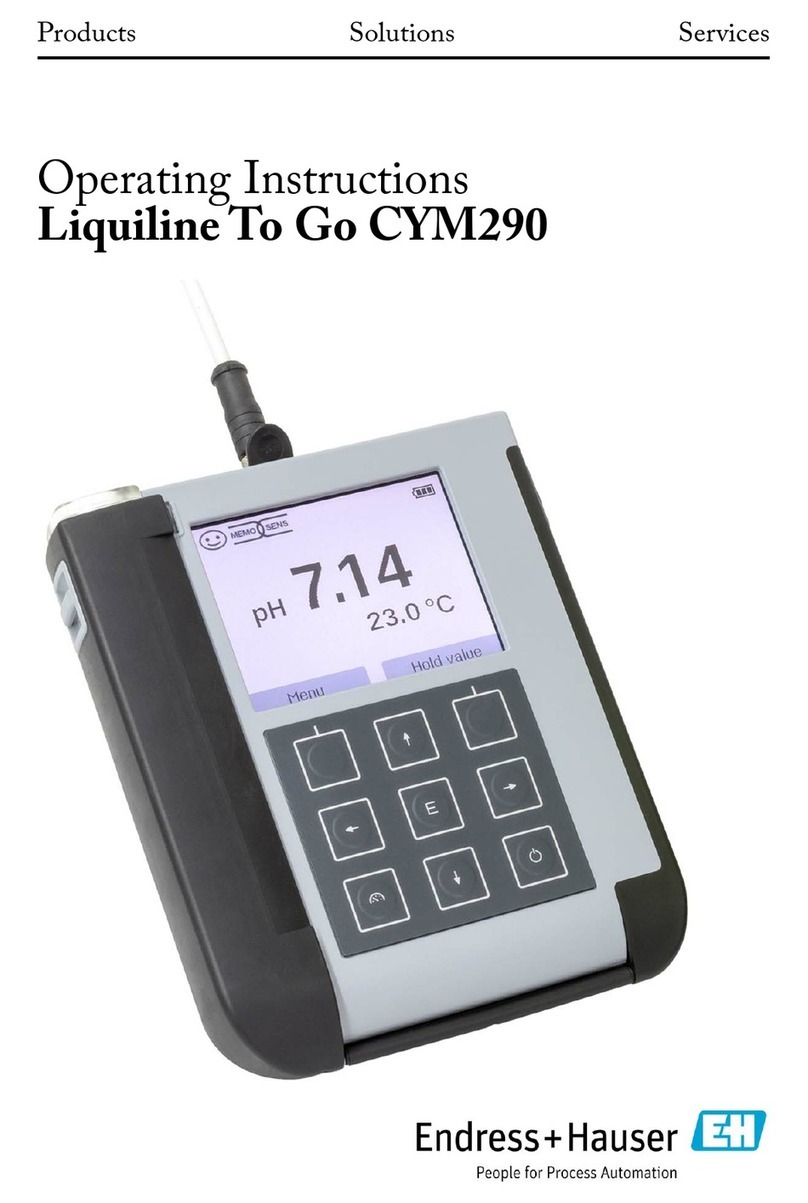
Endress+Hauser
Endress+Hauser Liquiline To Go CYM290 operating instructions
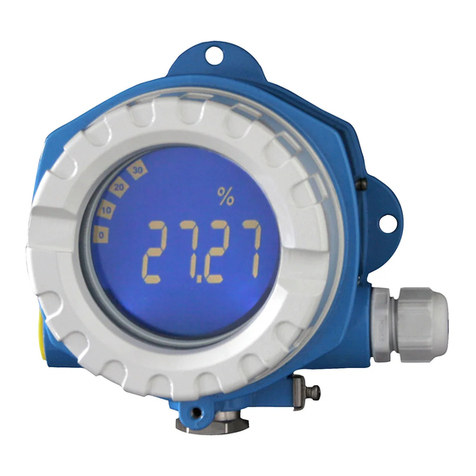
Endress+Hauser
Endress+Hauser RIA14 Brief operating instructions

Kongsberg
Kongsberg Simrad IS12 instruction manual
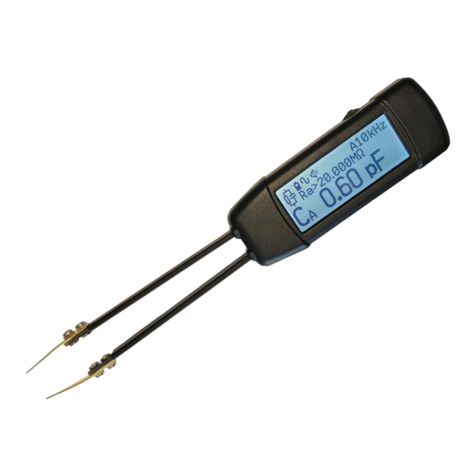
Siborg
Siborg LCR-Reader-MP user manual

LoRa Alliance
LoRa Alliance YO H2O Quick installation guide

FLYSURFER
FLYSURFER VIRON3 user manual

